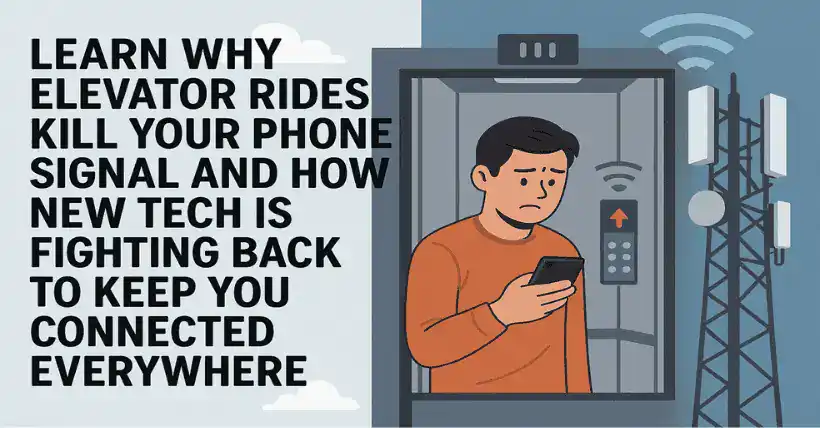Imagine this: You just stepped into the elevator, and your phone signal suddenly drops from full bars to “No Service,” like falling into a black hole. You stare at the screen in frustration, as if you’ve just missed out on a million-yuan WeChat red envelope…
Why do elevators always seem to play hide-and-seek with signal?
Today, let’s uncover the scientific truth behind this “metal escape room”!
01
Is the elevator actually a “signal terminator”?
The elevator isn’t just an ordinary metal box—it’s actually a star device in the history of science: the Faraday cage!
In the 19th century, scientist Michael Faraday discovered that a metal cage can block external electromagnetic fields.
The elevator’s metal shell acts like a 360-degree signal firewall, bouncing away every cry for help (electromagnetic wave) sent by your phone.
Even worse, the reinforced concrete elevator shaft “finishes the job” by absorbing any signal that manages to sneak through.
02
Elevator movement triggers a “signal relay race”
Think the elevator only blocks signal while standing still? Too naive!
When the elevator rapidly moves up or down, your phone is frantically taking part in a base station relay race.
Especially in the 5G era, high-frequency signals (like 3.5 GHz) are like fragile sprinters—they don’t travel far and hate obstacles.
High-frequency signals lose over 90% of their strength passing through ordinary walls, and when they meet an elevator—they just give up.
03
Humanity strikes back! How tech is saving elevator signal
Do we have to sit around and wait to be cut off? Scientists and engineers have already come up with solutions!
“Signal porters” — Repeaters
Install a “signal porter” on top of the elevator to relay outside signals inside, basically like a Wi-Fi delivery guy.
Repeaters receive signals through wired or wireless means, then copy, modulate, and amplify them so phones can pick them up more easily.
“Invisible antenna array” — Distributed Antenna System (DAS)
Hide antennas inside the elevator shaft, forming a “signal spider web” for full signal coverage.
The elevator car usually has a vent on the top, which we can cleverly use to achieve internal signal coverage—perfect for all your signal woes.
Future elevator “black tech”
- Glass sightseeing elevators: Transparent materials reduce metal shielding.
- Low-frequency bands (700 MHz): These signals are “wall-penetration masters,” able to pass through reinforced concrete.
- Space materials: Scientists are developing wave-permeable metal composites to make elevators both strong and signal-friendly.
04
What else can you do in an elevator?
- Mystical attempt: Press your phone to the elevator door or corner—some say it helps catch “escaped signals” (success not guaranteed).
- Emergency: Don’t panic! Some elevators have emergency call systems that don’t rely on mobile signals.
- Kill time: Pre-download jokes, novels, or… memorize elevator ads—you might just learn the whole script.

Disclaimer: This article is created by the original author. The content of the article represents their personal opinions. Our reposting is only for sharing and discussion purposes and does not imply our endorsement or agreement. If you have any objections, please get in touch with us through the provided channels.



